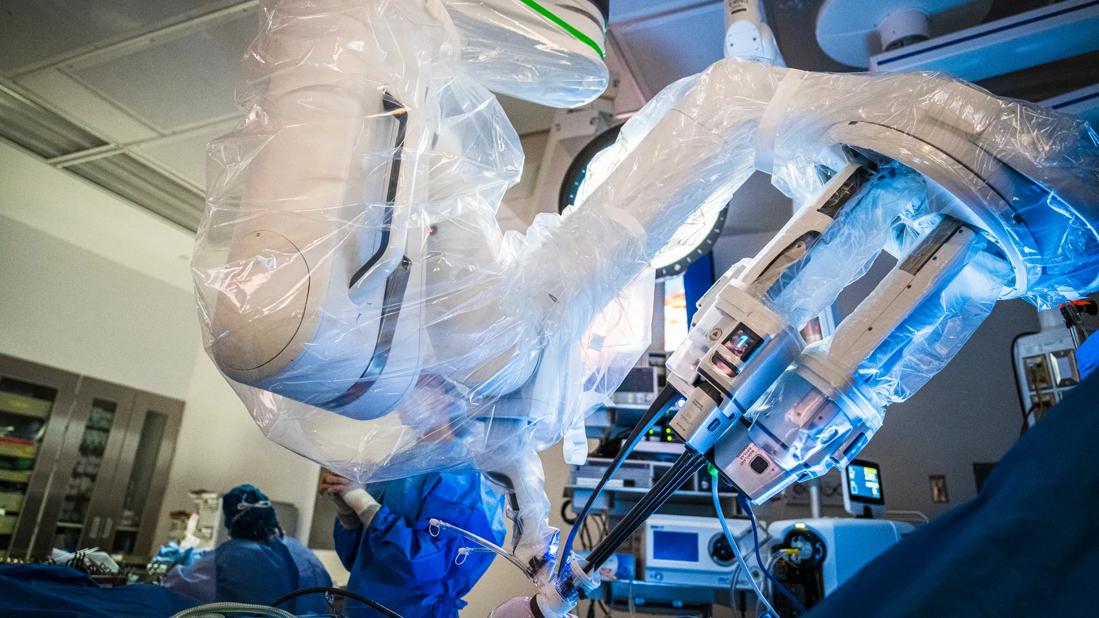Early experiences and outcomes on the brink of 200 cases

Cleveland Clinic was the first U.S. medical center to begin using the single-port (SP) robot for urologic procedures in late 2018. Since then, experts at Glickman Urological & Kidney Institute continue to fine-tune their surgical technique.
Advertisement
Cleveland Clinic is a non-profit academic medical center. Advertising on our site helps support our mission. We do not endorse non-Cleveland Clinic products or services. Policy
Jihad Kaouk, MD, Director of the Center for Robotic and Image-Guided Surgery and the Zegarac-Pollock Endowed Chair in Laparoscopic and Robotic Surgery, elaborates on the benefits of performing the prostate cancer surgery extraperitoneally, noting, “By avoiding the sac in which the bowel is contained, the surgery is compartmentalized, limited to the area just around the prostate. The gas bubble in which the robotic arms work expands the peritoneum, pushing the bowel out of the way, allowing better visibility.”
In addition, the SP robotic technique avoids the steep Trendelenburg positioning, which improves recovery time and mitigates potential risks associated with such positioning, including optical nerve edema, congestion and respiratory problems during surgery. Patients undergoing the procedure with SP robotic prostatectomy lie flat. They experience a single incision, versus the five incisions required in a patient’s abdomen in previous robotic radical prostatectomy procedures.
These key differences in the SP robotic technique allow for easier extraperitoneal access, which helps avoid intra-abdominal adhesions. The technique also avoids assistant ports. Improved recovery aspects of the SP robotic procedure include decreased opioid use (70 percent of patients do not use opioids), an increase in same-day discharges with a median hospital stay of 4.8 hours, no drains and no reported ileus, with good functional and oncologic outcomes. Nearly 90 percent of patients were continent at six months.
Advertisement
The team shared their experience using the SP robot to perform extraperitoneal radical prostatectomy in 185 cases at the American Urological Association 2021 Annual Meeting.
Advertisement
Advertisement

Large retrospective study suggests DOACs are safe, effective alternative to low-molecular-weight heparin in complex patient population

Care paths and research initiatives aim to answer unmet clinical needs

Study shows high rate of hematologic responses, low rate of disease progression

Bispecific antibody bridging therapy deepens durability of BCMA CAR T-cell therapy without overlapping toxicities in patients with relapsed/refractory multiple myeloma

Phase 2 study brings pivotal advances in treatment efficacy and safety for the most challenging-to-treat population

Patient with quadruple refractory multiple myeloma achieves complete response with cell therapy

Distinct baseline immune profiles can predict response and resistance to different types of CAR-T cells.

National Blood Clot Alliance collaborates with faith-based organizations on first-of-its-kind church bus tour